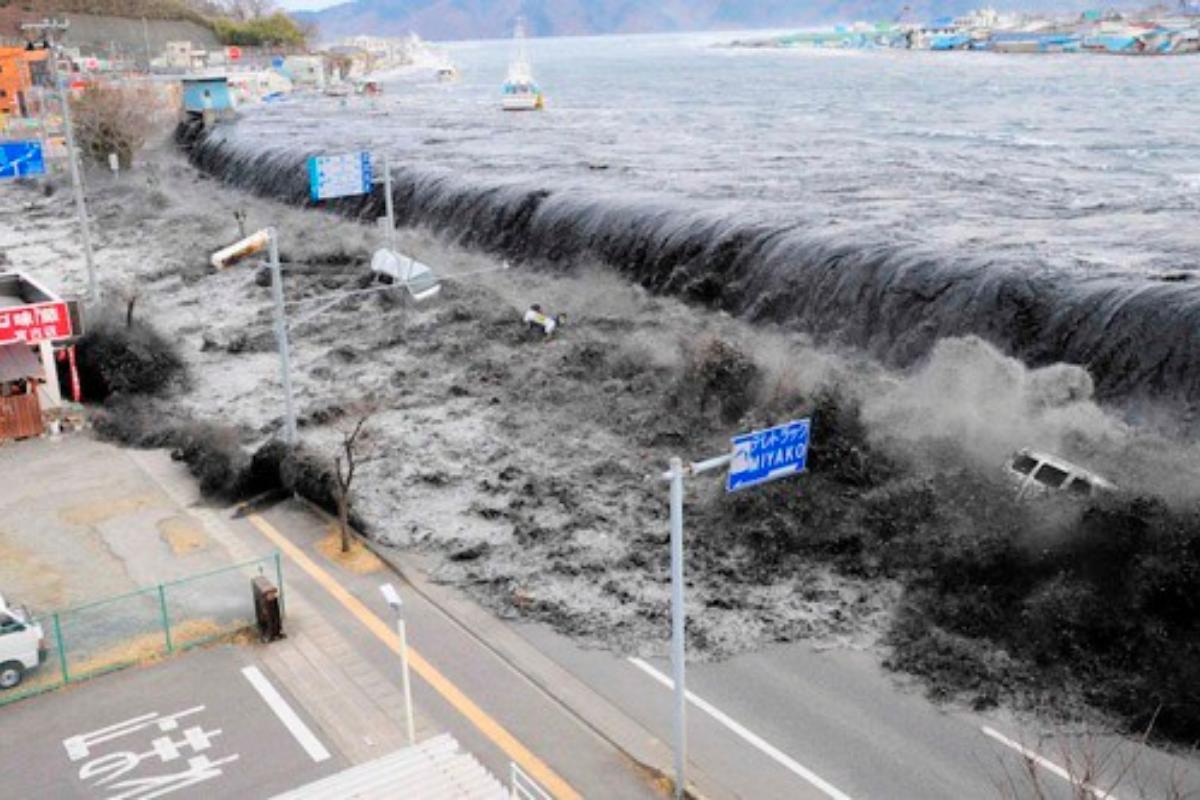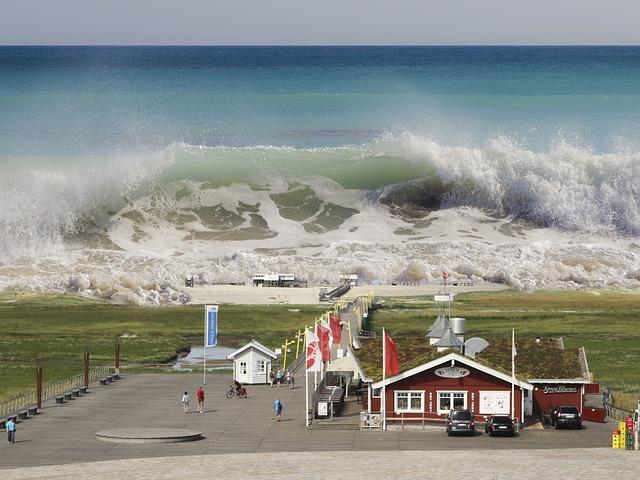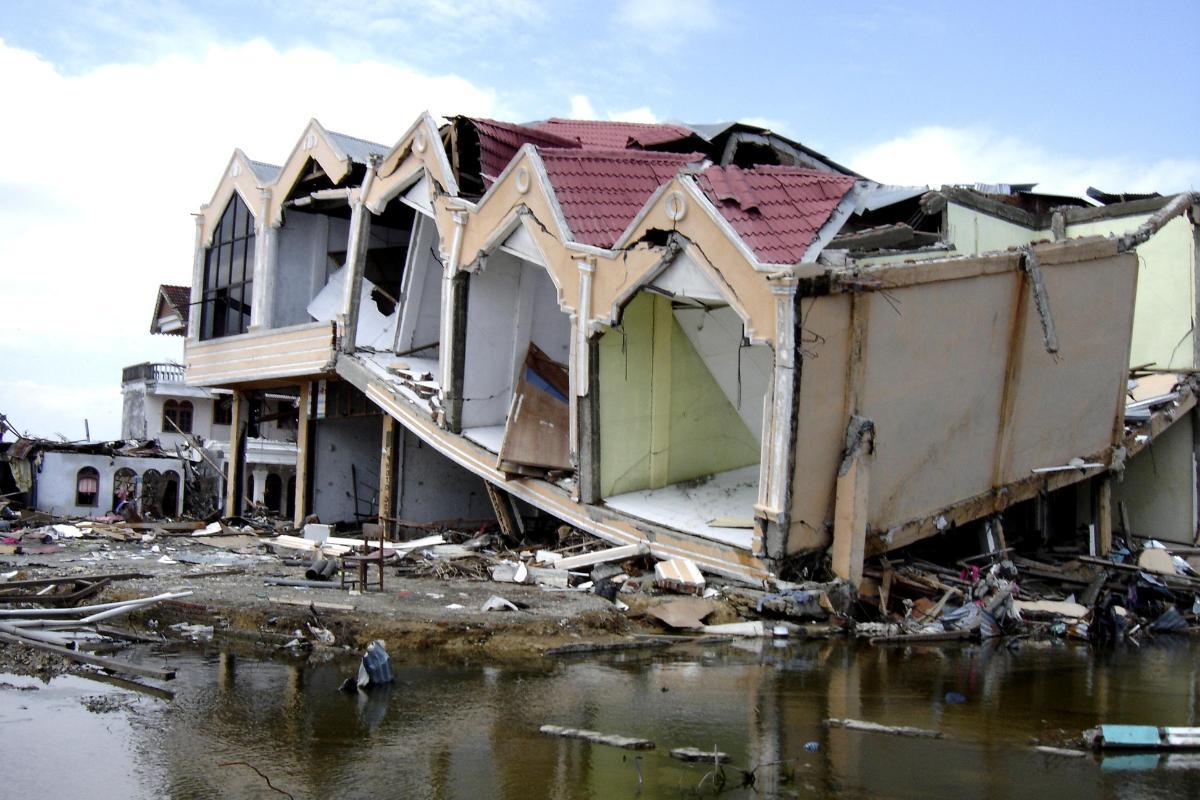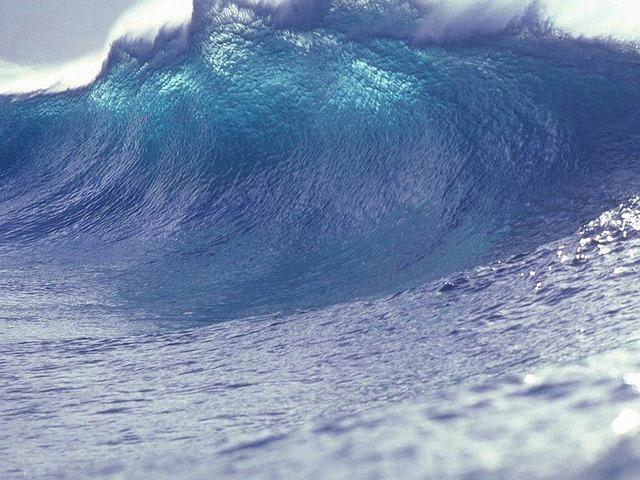What Are Tsunamis and How Do They Form?


Imagine a wall of water, taller than buildings, surging across the land with a deafening roar. This is the raw, untamed power of a tsunami, a natural phenomenon that has captivated and terrified humankind for centuries. These colossal waves, born from the depths of the ocean, can devastate coastlines, leaving behind a trail of destruction and heartbreak. Understanding how and why they occur is not merely a scientific pursuit; it's a vital step in protecting lives and communities.
The following article from thedailyECO explores how do tsunamis form, outlines their key characteristics, discusses their consequences, and provides guidance on what to do in the event of a tsunami.
What is tsunami and its characteristics?
A tsunami is a series of giant waves caused by sudden underwater disturbances, like earthquakes, volcanic eruptions, or landslides. These disturbances displace a massive amount of water, sending shockwaves that travel across vast distances at incredible speeds, sometimes exceeding 500 miles per hour in the deep ocean.
Here's a breakdown of the main characteristics of tsunamis:
- Tsunamis are set in motion by powerful and swift tremors caused by the collision of large pieces of the Earth's outer shell, known as tectonic plates. When these plates collide, a substantial amount of energy is released as the materials within the Earth's crust rearrange themselves.
- In contrast to earthquakes, which happen on the Earth's surface, tsunamis originate at the bottom of the ocean. This distinction is crucial; while both involve shaking of the Earth, tsunamis specifically start from the ocean floor.
- The seismic disturbance prompts the creation of massive waves known as tsunamis. These waves are characterized by their forceful agitation and can traverse entire ocean basins, impacting coastlines located far away from where the disturbance originated.
- Tsunamis have long wavelengths, enabling them to travel great distances across the ocean with minimal energy loss. This sets them apart from ordinary waves generated by the wind, which have shorter wavelengths.
- Tsunamis often come in a series, with the initial wave not necessarily being the largest. Following waves may arrive at irregular intervals, and their cumulative effect can lead to extended periods of coastal flooding.
- As tsunamis approach coastlines, they can cause significant inundation or flooding. This flooding can extend inland, affecting low-lying coastal areas and causing damage to buildings and communities.
Where does the word tsunami come from?
The word "tsunami" originates from the Japanese language. It is a combination of two Japanese characters: "tsu," meaning harbor, and "nami," meaning wave. Together, they form the term "tsunami," which translates to "harbor wave" or "tidal wave" in English.

What causes tsunamis?
Tsunamis are primarily caused by underwater earthquakes, although other factors such as volcanic eruptions, landslides, or meteorite impacts can also trigger them. Here's a breakdown of the main causes:
- Underwater earthquakes: the most common cause of tsunamis is underwater earthquakes, particularly those that occur along tectonic plate boundaries. The displacement of the sea floor during such earthquakes can lead to the rapid movement of water, creating a series of waves that propagate across the ocean.
- Volcanic eruptions: volcanic activity, especially underwater volcanic eruptions, can displace water and generate tsunamis. The explosive release of magma and gases from a volcano can cause the overlying water to be displaced, creating waves that propagate outward.
- Landslides: underwater landslides, whether caused by tectonic activity, volcanic eruptions, or other factors, can displace large volumes of water and result in a tsunami. These landslides may occur on the continental shelf or the slope of an underwater volcano.
- Meteorite impacts: while rare, large meteorite impacts in the ocean have the potential to generate tsunamis. The impact can displace a significant amount of water, creating waves that propagate across the ocean.
- Man-made causes: though less common, certain human activities such as underwater explosions or the collapse of large structures into the ocean can also lead to tsunami generation.
It's important to note that not all earthquakes or underwater disturbances result in tsunamis. The magnitude, depth, and type of seismic activity play a crucial role in determining whether a tsunami will be generated. Additionally, the specific characteristics of the underwater event influence the size and potential impact of the resulting tsunami.
If you wish to know more about what submarine volcanoes are, their formation, characteristics and much more in this other article.
Consequences of a tsunami
Tsunamis can have devastating consequences, leading to widespread and severe impacts on coastal communities and the surrounding regions. The most consequences of a tsunami include:
- Inundation and flooding: the primary and immediate impact of a tsunami is the inundation of coastal areas. Large waves can flood low-lying coastal regions, causing extensive damage to infrastructure, homes, and businesses.
- Loss of life: tsunamis pose a significant threat to human life. The rapid and forceful inundation of water can lead to drowning, especially in densely populated coastal areas.
- Property damage: the powerful waves generated by tsunamis can result in widespread destruction of buildings, roads, bridges, and other critical infrastructure. This can lead to long-term economic and social challenges for affected communities.
- Economic impact: the destruction of infrastructure, loss of businesses, and disruption of economic activities can have a profound and lasting economic impact on the affected regions. Rebuilding and recovery efforts often require significant financial resources.
- Environmental damage: tsunamis can cause environmental damage, such as the erosion of coastlines and the destruction of ecosystems. The influx of saltwater into freshwater ecosystems can also harm local flora and fauna.
- Displacement of populations: in the aftermath of a tsunami, many individuals, and families may be displaced from their homes, leading to temporary or long-term relocation. This displacement can strain resources and exacerbate existing social challenges.
- Infrastructure disruption: tsunamis can disrupt critical infrastructure, including transportation networks and utilities. The damage to ports and harbors can hinder the movement of goods and impede recovery efforts.
- Long-term psychological impact: survivors of tsunamis may experience long-term psychological effects, including post-traumatic stress disorder (PTSD) and other mental health challenges. Rebuilding communities involves addressing not only physical infrastructure but also the emotional well-being of affected individuals.
It's important to note that the severity of the consequences depends on various factors, including the magnitude of the tsunami, the proximity of the impacted areas to the tsunami's source, and the level of preparedness and response measures in place.

Difference between tidal wave and tsunami
Although both "tidal wave" and "tsunami" might sound like similar terms for large waves, they are actually quite different. Here's a breakdown of their key differences:
Cause:
- Tidal wave: caused by the gravitational pull of the sun and moon on Earth's oceans, resulting in the regular rise and fall of tides.
- Tsunami: caused by sudden underwater disturbances like earthquakes, volcanic eruptions, or landslides, displacing a large volume of water.
Frequency:
- Tidal wave: occur predictably twice a day, with varying heights depending on the lunar phase.
- Tsunami: rare and unpredictable, occurring anywhere from hours to years apart.
Size and speed:
- Tidal wave: relatively small, usually only a few feet tall. Travel at speeds similar to regular waves, around 16 to 48 kilometers per hour (10-30 miles per hour).
- Tsunami: capable of attaining colossal heights, occasionally surpassing 30 meters (over 100 feet). Tsunamis exhibit remarkably high speeds, reaching up to 805 kilometers per hour (approximately 500 miles per hour) in deep ocean water.
Impact:
- Tidal wave: while strong enough to cause coastal erosion over time, they generally pose little immediate threat to people or property.
- Tsunami: can be incredibly destructive, causing widespread flooding, property damage, and loss of life.
You might also be interested in this other article, where we discuss the fundamental differences between earthquakes and tremors.
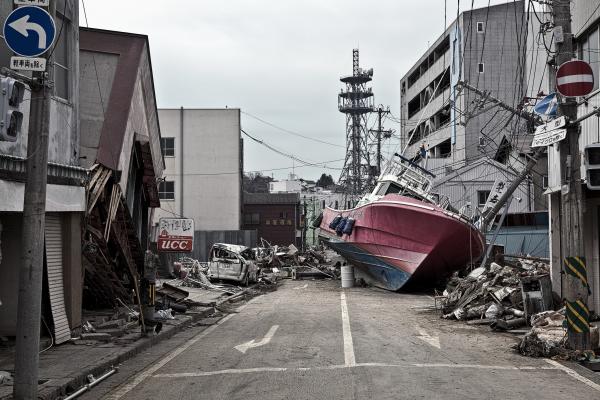
What are the most destructive tsunamis in history?
Determining the "most destructive" tsunamis involves considering multiple factors such as death toll, affected area, wave height, and economic impact, making it a complex task. Nonetheless, the following list highlights some tsunamis that are widely regarded as among the most destructive in history, taking into account various metrics:
Indian Ocean Tsunami (2004):
- Location: Sumatra, Indonesia
- Death toll: over 230,000 lives lost across 14 countries
- Wave height: up to 30 meters (100 feet)
- Impact: devastating impact on Indonesia, Thailand, India, Sri Lanka, and other Indian Ocean nations. Widespread destruction of infrastructure and economies
Tohoku Tsunami (2011):
- Location: Sendai, Japan
- Death toll: nearly 16,000 confirmed deaths and over 2,500 missing
- Wave height: up to 38 meters (125 feet)
- Impact: triggered the Fukushima nuclear disaster, causing significant economic and environmental damage beyond the immediate tsunami damage
Lisbon Earthquake Tsunami (1755):
- Location: Lisbon, Portugal
- Death toll: estimated 60,000-100,000 lives lost
- Wave height: up to 30 meters (100 feet)
- Impact: devastated Lisbon and affected coastal areas across Portugal and Spain. Contributed to widespread philosophical and scientific debates about natural disasters
Krakatoa Eruption Tsunami (1883):
- Location: Krakatoa volcano, Indonesia
- Death toll: estimated 36,000 lives lost
- Wave height: up to 40 meters (130 feet)
- Impact: triggered by the massive volcanic eruption, causing widespread destruction along the Sunda Strait and beyond. Notably generated atmospheric pressure waves recorded globally
These are just a few examples, and other notable tsunamis include the Enshunada Sea tsunami (1498), Sanriku tsunami (1896), and Arica tsunami (1868).
You might be interested in this other article, where we have listed the biggest earthquakes in history.

What to do in case of a tsunami?
If you find yourself in a potential tsunami situation, it's crucial to act quickly and calmly to prioritize your safety. Here are the key steps to take:
- If you hear a tsunami warning or experience signs like an earthquake, receding water, or unusual noises, don't wait for confirmation. Immediately move to high ground at least 30 meters (100 feet) above sea level and as far inland as possible.
- Avoid beaches, harbors, and other low-lying areas.
- Don't be fooled by the first wave. Tsunamis often occur in multiple waves, with later waves potentially larger than the first. Stay in safe high ground until authorities declare the all-clear.
- If you cannot immediately reach high ground, seek shelter in a sturdy building on the highest floor possible. Stay away from windows and doors.
- If caught in the water, hold onto something that floats and try to stay afloat. Avoid debris and electrical lines.
- Do not drive through flooded areas. Roads may be damaged or washed away, presenting significant hazards.
- Once in a safe area, stay informed about the situation and updates from official sources. Do not return to affected areas until authorities declare it safe.
Remember, even small tsunamis can be dangerous. Always prioritize your safety and follow instructions from emergency personnel.
If you wish to know more about the raw power of tsunamis and their devastating impact in the video below.

If you want to read similar articles to What Are Tsunamis and How Do They Form?, we recommend you visit our Meteorological phenomena category.





